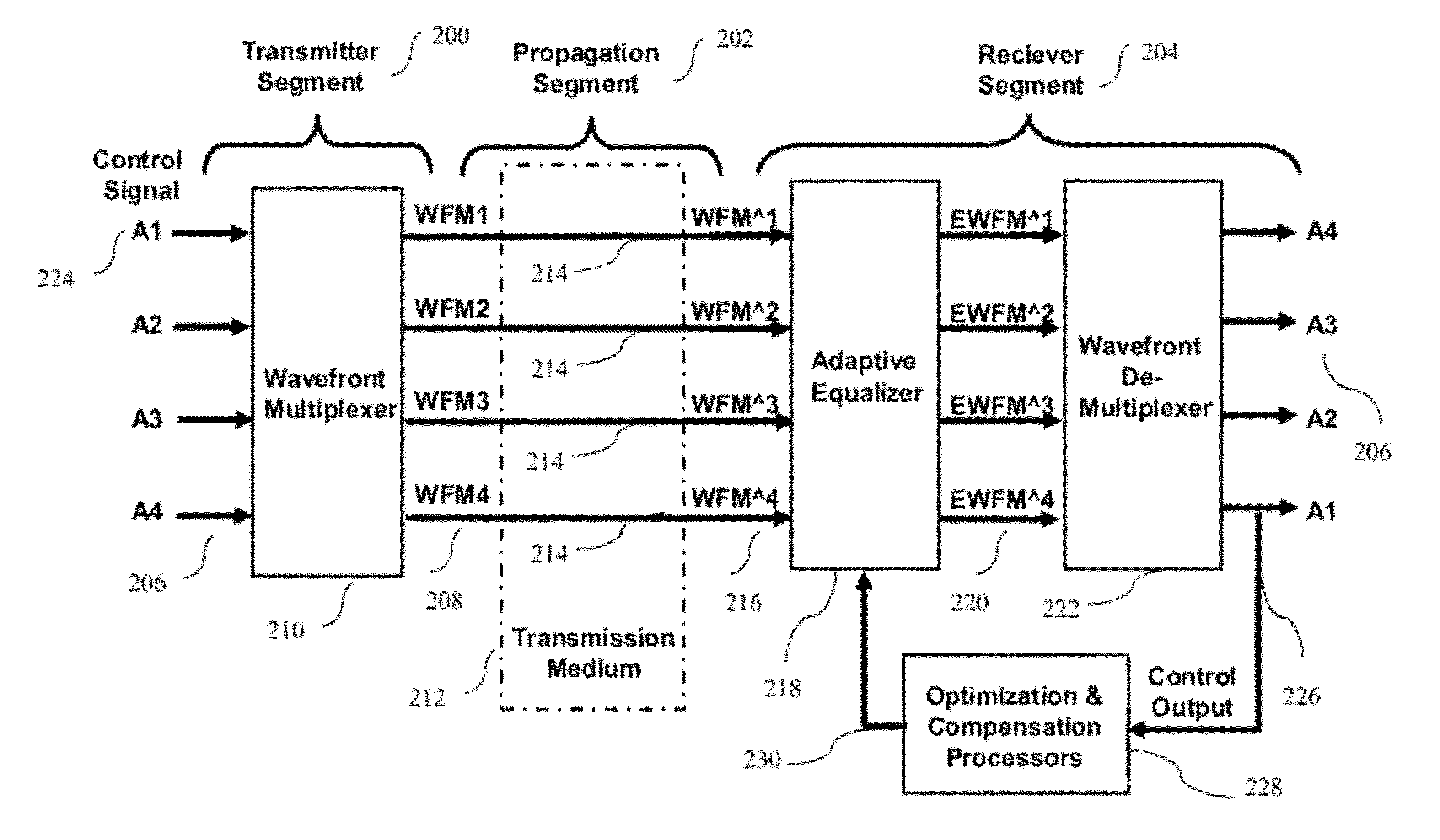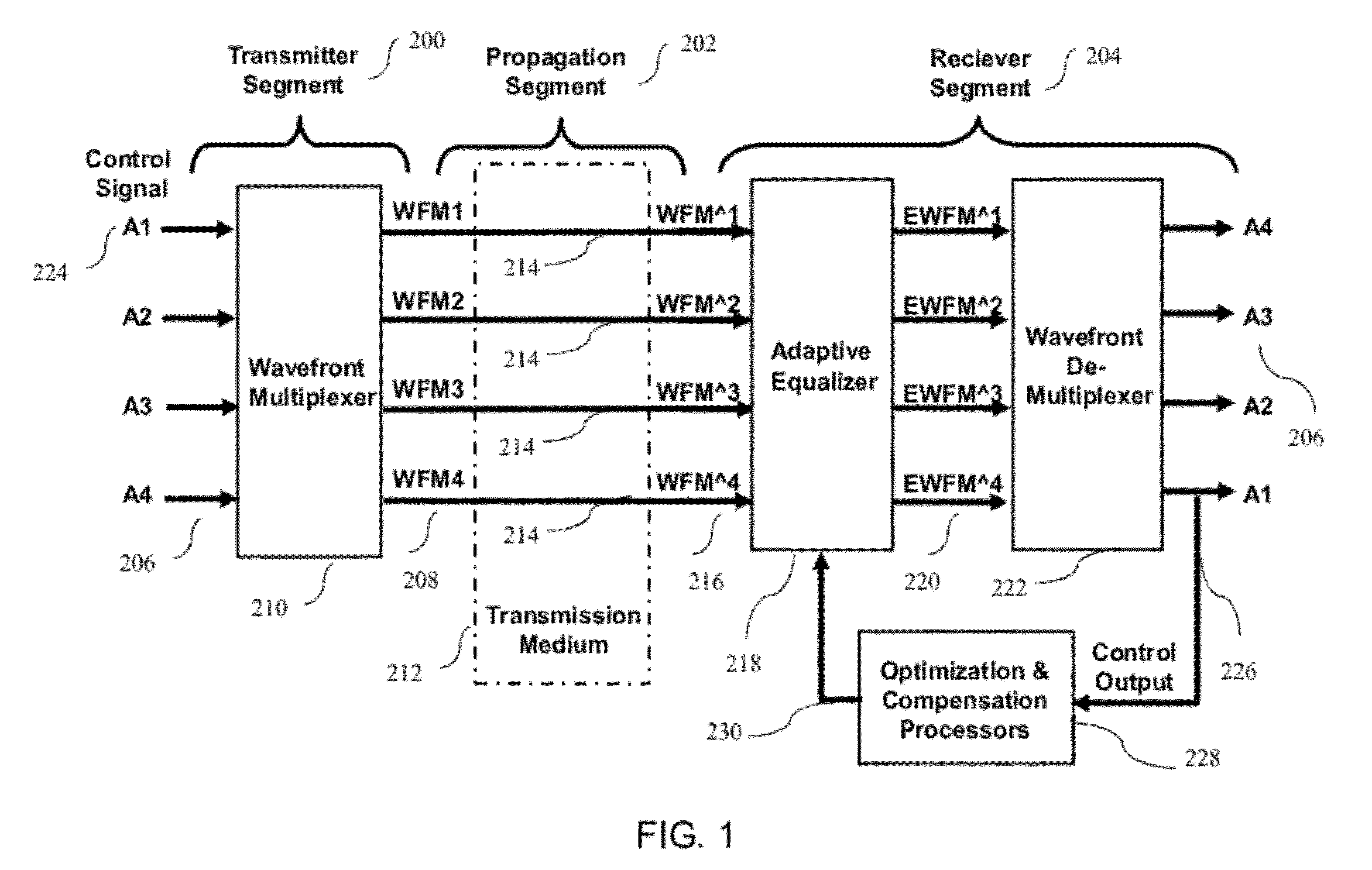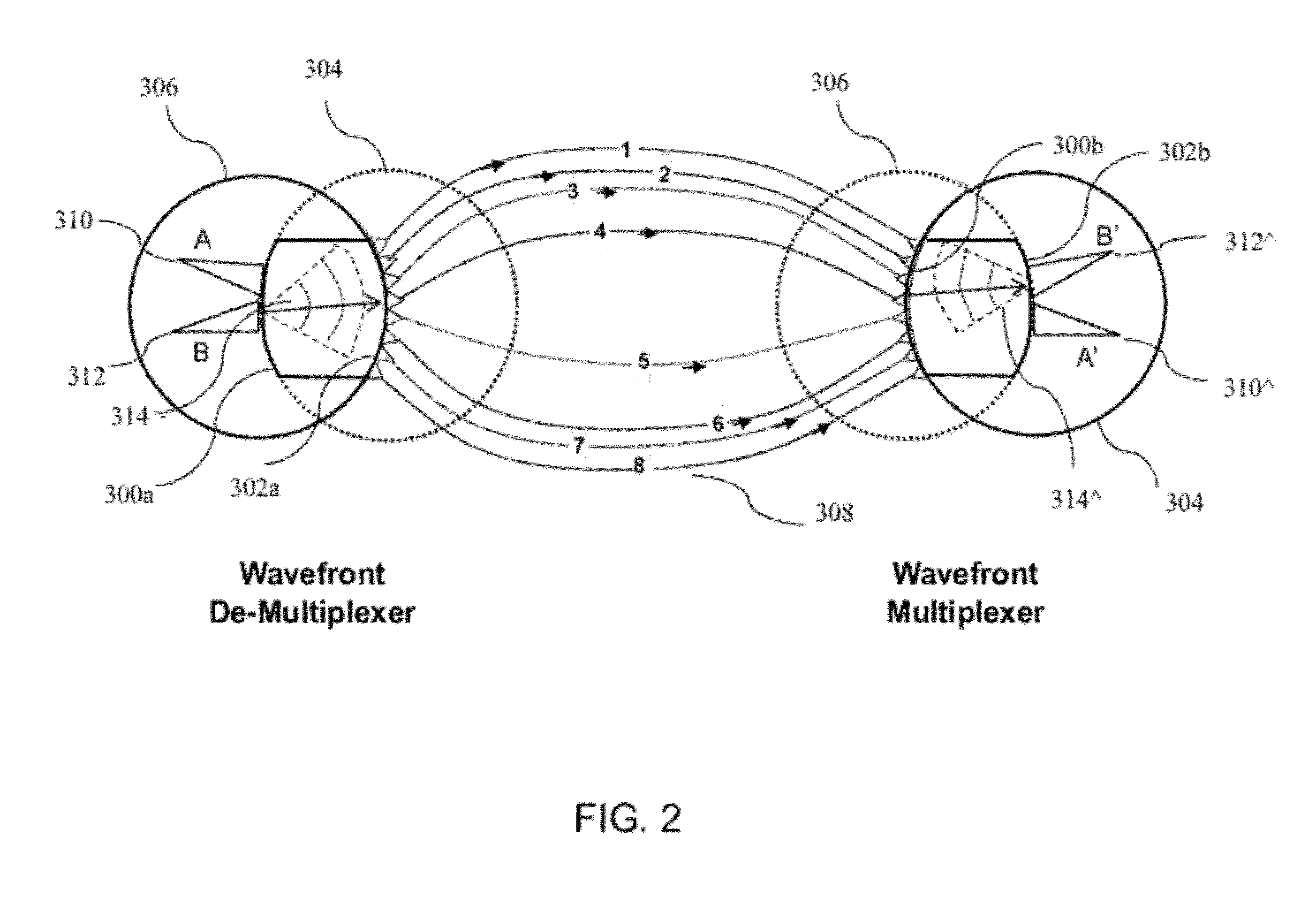Coherent Power Combining via Wavefront Multiplexing on Deep Space Spacecraft
a technology of wavefront multiplexing and deep space spacecraft, applied in the field of communication systems, can solve the problems of unpractical conventional calibrations with pre-compensation using feedback information from the receiver, unpractical at a distance beyond 10 aus, and the power level of transmitted signals is significant, so as to achieve the effect of improving the power level of transmitted signals
- Summary
- Abstract
- Description
- Claims
- Application Information
AI Technical Summary
Benefits of technology
Problems solved by technology
Method used
Image
Examples
Embodiment Construction
[0050]The present invention relates to the fields of communications systems and computer networks and, in particular, to deep space communications architecture, satellite networks, Direct-Broadcast-Service (DBS) broadcasting architectures, DBS uplink terminals, and DBS receive only subscriber ground terminals. More specifically, but without limitation thereto, the present invention pertains to a communication system and method that allows a transmitter segment (operator at uplink segment) to dynamically combine power from plurality of propagation channels (transponders) in order to improve power levels of signals being transmitted, without affecting the receiver segment (downlink segment) and the propagation segment (space segment), and without modifying the configuration of the propagation apparatus (satellite).
[0051]The following description, taken in conjunction with the referenced drawings, is presented to enable one of ordinary skill in the art to make and use the invention and...
PUM
 Login to View More
Login to View More Abstract
Description
Claims
Application Information
 Login to View More
Login to View More - R&D
- Intellectual Property
- Life Sciences
- Materials
- Tech Scout
- Unparalleled Data Quality
- Higher Quality Content
- 60% Fewer Hallucinations
Browse by: Latest US Patents, China's latest patents, Technical Efficacy Thesaurus, Application Domain, Technology Topic, Popular Technical Reports.
© 2025 PatSnap. All rights reserved.Legal|Privacy policy|Modern Slavery Act Transparency Statement|Sitemap|About US| Contact US: help@patsnap.com



